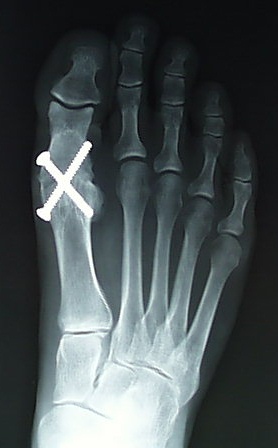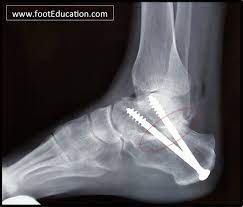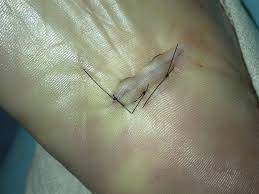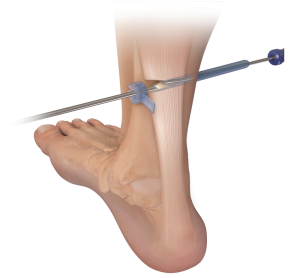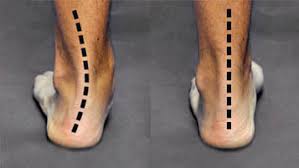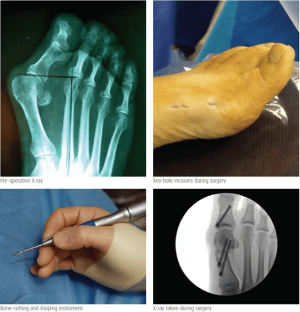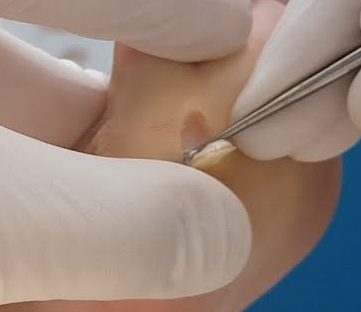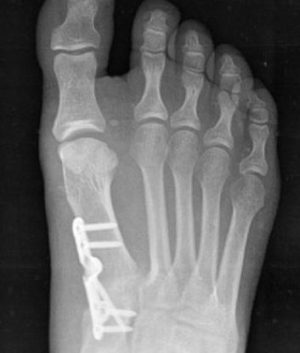
The Lapidus procedure is a surgical procedure used to treat hallux valgus, a condition in which the big toe drifts away from the midline of the foot, causing a bunion. It involves fusing the first metatarsal bone to the medial cuneiform bone in the midfoot to correct the alignment of the bones and reduce the deformity. This procedure is typically reserved for cases of severe hallux valgus or for patients who have not responded to more conservative treatments.
During the procedure, the surgeon makes an incision on the top of the foot and removes a small piece of bone from the base of the first metatarsal. The metatarsal bone is then repositioned and fixed in place with screws or a plate to hold it in the desired alignment. Over time, the bones grow together and form a solid fusion, which helps to stabilize the midfoot and reduce the severity of the bunion.
After the surgery, the patient may need to wear a cast or brace for several weeks to protect the foot and allow the bones to fuse together. Physical therapy may also be recommended to help improve strength, flexibility, and range of motion in the affected foot. While the Lapidus procedure can be highly effective in correcting hallux valgus, it does require a period of immobilization and recovery, and may have some potential risks and complications, such as non-union, nerve injury, or infection. It is important to discuss the potential risks and benefits of the Lapidus procedure with a qualified healthcare professional before undergoing the procedure.

